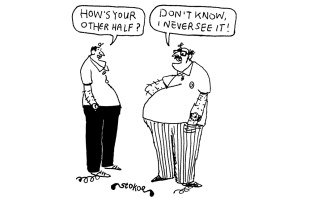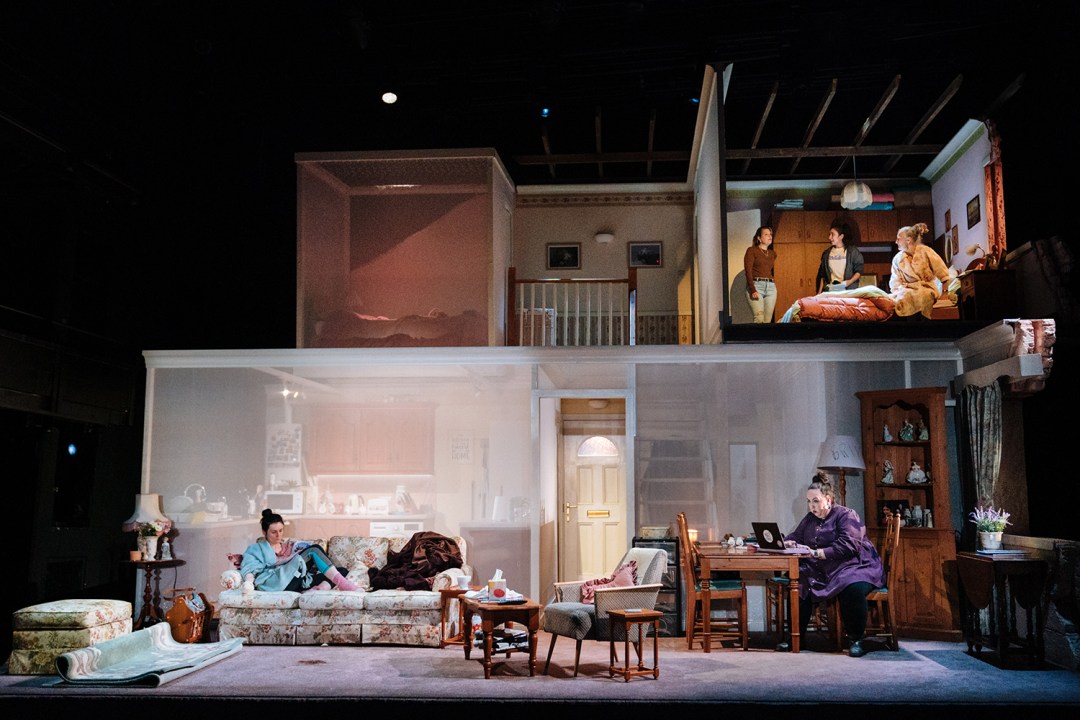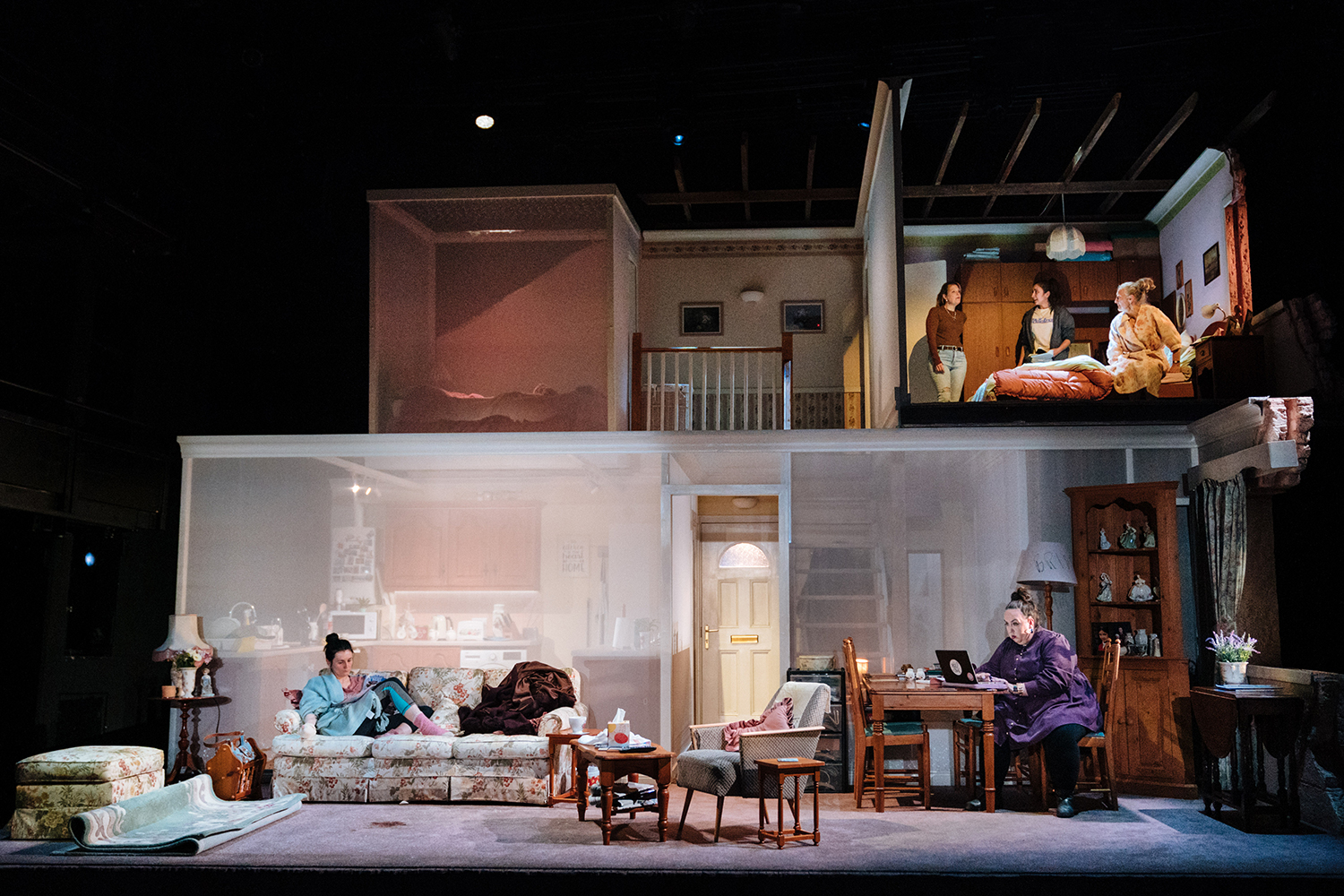Deborah Bruce’s new play Dixon and Daughters is a family drama that opens on a note of sour mistrust. We’re in a working-class home in Yorkshire where a vituperative old crosspatch, Mary, has just returned from prison. Rather than accepting her daughters’ friendly welcome she treats them all with open hostility.
Had Ibsen been in attendance, he would have blushed with envy
Her first malevolent act is to try to evict Julie, even though her boyfriend has subjected her to horrific and repeated violence. And Mary is highly suspicious of the absent Briana who has changed her name and is threatening to return home, by force if necessary. What was Briana’s crime? And why is Mary so hostile to Julie who clearly needs her love and support? The first hour feels like a forced visit to a snake-pit full of outraged females whose feuds are being tempered unsuccessfully by the warm and intelligent Bernie. She’s the only character who has a job and a large enough income to afford smart, fashionable clothes.
Then the puzzle deepens. To annoy her angry daughters, Mary invites a damaged Cockney beggar, Leigh, to share the family home. Leigh (Posy Sterling) has suffered so much sexual abuse that she can only see men as physical objects to be exploited or neutralised. She explains in robotic tones how to pacify a vulnerable male with dextrous fingers and how to flatten an aggressive male with a well-aimed headbutt.

When she arrives in the sitting room, hungry, penniless, and wrapped in a filthy blanket, she speaks with such frail and needy gratitude that her performance seems to come from real life rather than an actor’s imagination.
Much of the play has the same amazing air of naturalism, and the dialogue feels like a verbatim documentary. And though humour is never far from the surface, the show refuses to stray down the avenue of comedy. Director Roisin McBrinn knows what emotional colourings she wants – and she never misses. And yet the script is as frustrating as real life and it refuses to explain why Mary was convicted of perverting the course of justice.
At last, in the final act, we learn the horrific cause of the family’s civil war. Years earlier an unseen father figure, Dixon, threw a grenade into the lives of these innocent women but they’re reluctant to blame him explicitly for his monstrous crime. Part of his bitter legacy is to convince them that suffering is a woman’s unavoidable lot in life. The show closes with a brief subplot that imitates the central narrative but in a minor key. This is an amazing feat of writing, performance and directing. Had Ibsen been in attendance, he would have blushed with envy.
Jules and Jim, adapted by Timberlake Wertenbaker from the novel by Henri-Pierre Roché, follows a sexual revolution that started in Paris at the time of the Belle Époque. Jules is a German Jew who lives off family investments. He and his best friend Jim meet a freewheeling beauty, Kath, and the trio of intellectual oddballs set off on a hedonistic odyssey that lasts for several decades.
They operate as a matriarchy. Kath is in charge and she gets whatever she wants. She first marries Jules but later divorces him and marries Jim instead while claiming the right to share her bed with additional lovers. If she finds a boyfriend particularly attractive, she has a child with him and she expects all her menfolk to tolerate her every sexual whim. Patricia Allison turns the tricky and manipulative Kath into an admirable and even adorable creature.
Samuel Collings is highly watchable as Jules, the tortured dreamer. The set doesn’t quite qualify as a triumph. The plain white stage is decorated with a wobbly line of blue paint that wanders across the rear wall like the inky trail of a squid. Not too subtle. A better effect uses lights and bubbles to represent the moment when Kath plunges into the Seine for a laugh. The visual suggestion of murky water is uncannily accurate.
Some playgoers may find the characters’ cerebral chit chat pretentious. They relax by reading chunks of Homeric Greek to each other and they discuss romantic and platonic love from all sorts of angles. One of them asks if it’s possible to die of a broken heart, and another declares that ‘friendship is love seen in profile’. And though they sound self-conscious and a little tiresome, their company on stage is sweet and innocent. Their capacity to pursue pleasure without responsibility keeps them engaged and optimistic about their lives and the world they inhabit.
What a contrast with the present generation who enjoy an even greater degree of freedom and yet seem to be defined by anger and unhappiness. It’s a treat to spend 90 minutes observing a set of bright, brilliant youngsters who don’t just benefit from freedom, they love it.








Comments